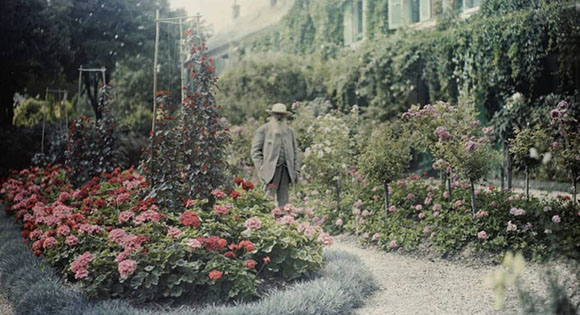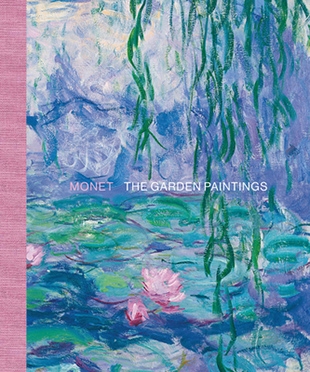Gardens are wonderful spiritual places that engage our senses, evoke our wonder, bathe us in beauty, and connect us to the numinous natural world. Gardens can also bring out the child in us and activate our playfulness.
They are matrixes where we are challenged to celebrate both the Mystery and our own transformation.
Claude Monet (1840-1926) is perhaps the most famous painter of gardens, and this gorgeous volume brings together his sense-luscious paintings from an exhibition at the Kunsmuseum Den Haag in the Netherlands. These are the works he created during his last years in Giverny, France. There he fashioned his own vision of paradise with an incredible variety of plants and flowers, a Japanese bridge, willow trees, and a pond filled with water lilies that reflected the sky and the clouds. He liked to observe how the images changed during different times of day.

Claude Monet in front of his home in Giverny
To immerse ourselves in these exquisite paintings is to plunge into Monet's garden pleasures. To add to our appreciation of this gifted artist are any historical photos of him at work and the layout of early exhibitions. Essays deepen our understanding of his significance: a foreword and an analysis of "The Garden as An Experience in Space and Time" by Benno Tempel; "Monet at Giverny 1883-1926," an essay by Marianne Mathieu; and two selections by Frouke van Dijke on "Under the Wisteria" and "The Rediscovery of Monet"; and a biography by Astrid Goubert.
The eco-theologian Thomas Berry has written: "Gardening is an active participation in the deepest mysteries of the universe." Monet would agree. Before he relocated to Giverny, he was a leading light of the Impressionistic period but left that all behind to cultivate his home-grown garden. There he found all that he needed to satisfy his yearning for beauty and mystery.
